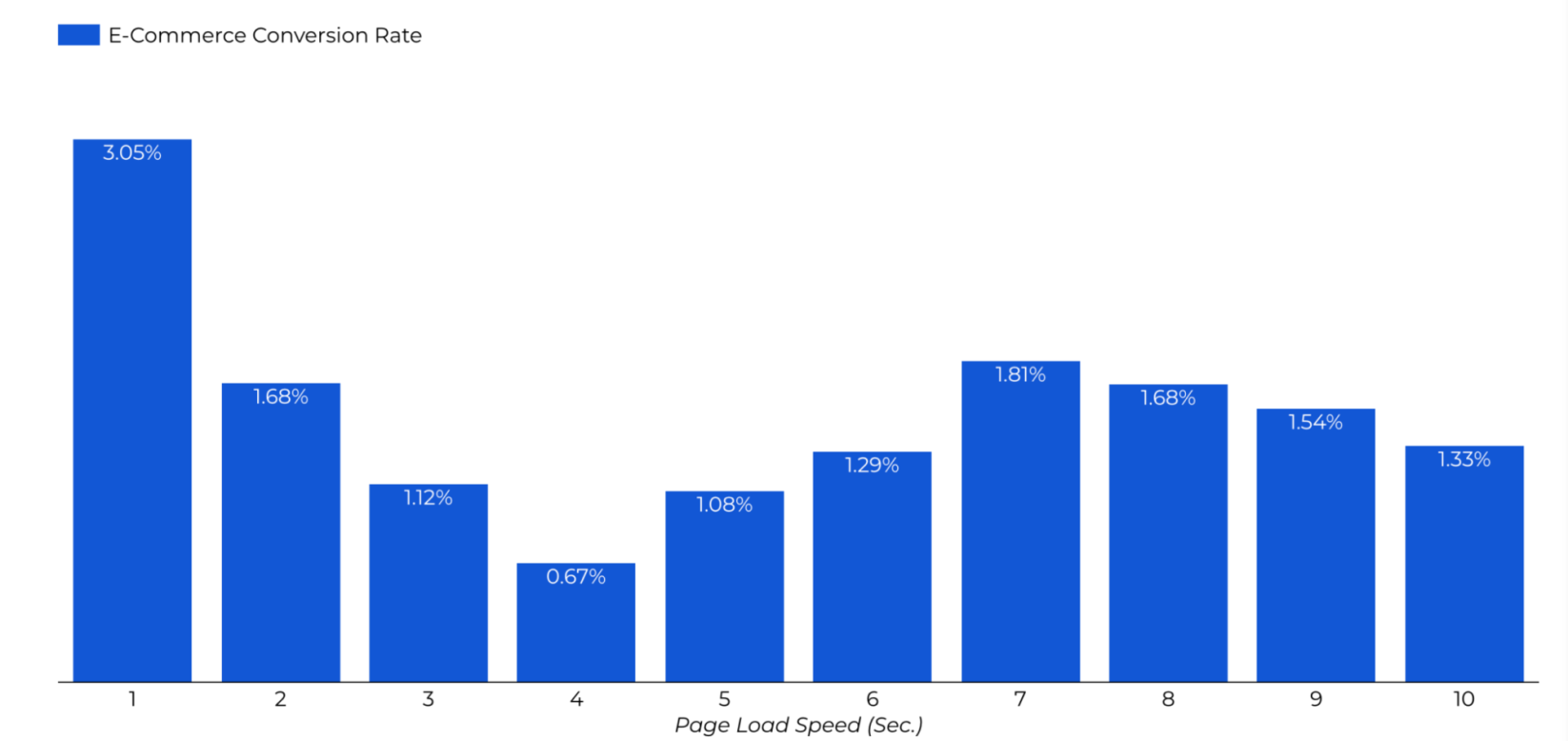The importance of performance
The faster your site, the better you’ll be at capturing customers—including ones abandoning slower competitor’s site.
Impact on conversion rates
Just a millisecond improvement in site speed, in fact, can positively impact conversions. Deloitte found that with a 0.1 second increase in site speed, retail conversions increased by 8.4%. Those consumers spent almost 10% more in a single fast-loading session.
Research by Portent corroborates these findings. It found ecommerce websites that load within one second have a 2.5 times higher conversion rate than those that load within five seconds.

Conversion rate decreases as page load speed increases.
These conversion enhancements may seem small, but they have a huge impact on the revenue a site generates. For example, if an e-commerce site generates $10 million in sales per year, a 2% increase in conversions for a one second reduction in site load time (as shown in the Walmart case study) would represent a $200,000 increase in revenue.
How fast should a web page load? According to skilled.co, 47% of customers expect web pages to load in 2s or less.
Impact on Search Engine Rankings
When a user uses a search engine to conduct a search, the search engine generates a list of websites that are listed in order from most likely to least likely to satisfy the query. The list is usually divided into a series of results pages (or SERPs) listing sites that can answer the user's query, usually 10 results per SERP. Most users will only browse the first page of search results, then choose to optimize their search and retry. Therefore, the goal of most SEO specialists is to get the websites they manage into the top 10 search results for the query they are targeting.
How high a site ranks in search engine results depends on many factors, including how relevant it is to the query and how authoritative the search algorithm considers the site to be. By optimizing a site for search, site owners can ensure that their content shows up as high as possible in search rankings, making users more likely to click through.

In Europe and the US, Google dominates the search engine market and as a result, Google's algorithms largely dictate SEO best practices. 2010 saw Google announce the inclusion of site speed in its search rankings and since then, site performance has become increasingly influential and performance optimization is now a large part of SEO.
Additionally, slow page load speeds can lower your Google Ads Quality Score, which means a higher cost per click. In an era where customer acquisition and advertising costs are increasing disproportionately in most industries, this is an extremely costly problem.



